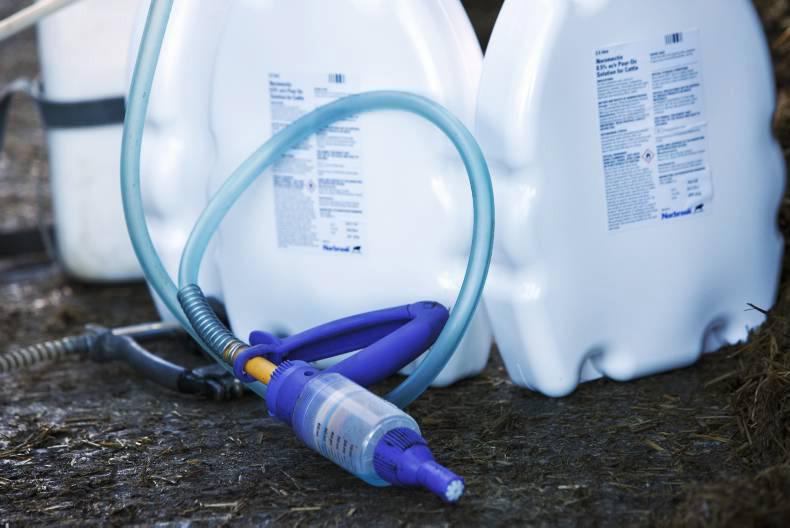Dosing:
Now is the time to dose dry cows for worms, lice and fluke. There’s no point in dosing unnecessarily – it’s a waste of money – but, more importantly, it could lead to anthelmintic resistance. For this reason, it is recommended that farmers do diagnostic tests to determine what to dose their stock for. For dairy farmers, the diagnostic tools available are milk samples and dung samples. Milk samples should have been taken throughout the year to draw a picture of your herd’s exposure to worms and liver fluke. The milk test is an ELISA test, so it only tells you what the exposure is. At this stage, faecal or dung samples will tell a truer picture of what your animals actually have. Samples from 10 or 15 animals can be pooled together to reduce the costs. Ask your vet for advice. When dosing for liver fluke, make sure you choose the right product. Only some products are licenced for use on dairy cows, and only some products will treat all three stages of liver fluke. Most products only treat adult fluke, so a second dose will be required to kill the immature fluke at the first dose.
Lime:
Some farmers have enquired about what type of lime to use for bedding cubicles. There are three types of product on the market: ordinary cubicle lime (ground limestone); hydrated lime (ground limestone dried in a kiln); or a combination of ground and hydrated lime, mixed at different rates. The purpose of liming cubicles is to increase the pH on the cubicle bed, which inhibits the growth of bacteria. It also helps to soak up moisture, which helps to prevent the growth of bacteria. Hydrated lime has a higher pH than ground limestone. It increases the pH of the bed to 12.4, which kills all bacteria. For this reason it is a registered disinfectant. Ground limestone raises the pH to 8.4, which is not high enough to kill staph and strep bacteria. Cost wise, hydrated lime is generally more expensive than ordinary cubicle lime, because it goes through extra processing. The recommendation is to use no more than 170g per bed, which is equivalent to a fistful of lime per cubicle. Using too much hydrated lime could cause sores or teat-end damage.
Dry cow minerals:
At this stage, most dry cows should be on dry-cow minerals. There are lots of products on the market of varying specifications. In terms of the major elements, magnesium is critical. The dry cow requires between 20g and 25g of magnesium per day before calving. If the label says there is 20% magnesium in the mineral mix and you are feeding 120g per day, the cows are getting 24g of magnesium per day. The next big one is phosphorus. Not all minerals will have phosphorus included, but most cows need around 4g/day before calving. For iodine, cows require about 60mg to 70mg per day. Where it says on the label that iodine is included at 500mg, this means the cows will get 60mg if fed 120g of minerals per day. For selenium, the target is for 5mg or 6mg per day pre-calving. If it says there is 50mg on the label and if 120g per day is fed, the cows will be consuming 6mg per day.






 This is a subscriber-only article
This is a subscriber-only article










SHARING OPTIONS: